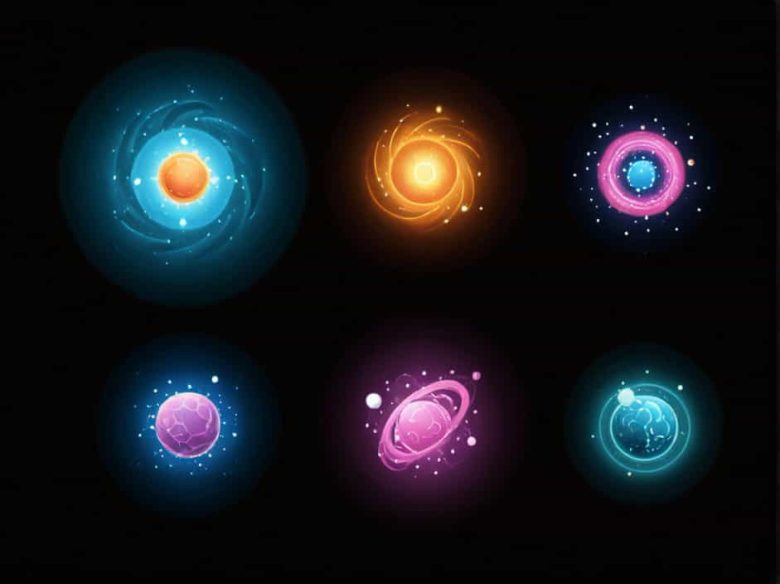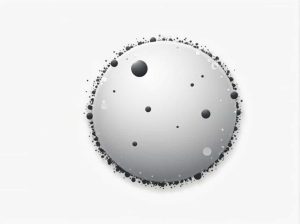Nebulae are some of the most breathtaking objects in the universe. These vast clouds of gas and dust create dazzling displays of color and shape, often appearing in images taken by telescopes like the Hubble Space Telescope and James Webb Space Telescope (JWST). But what do nebulae actually look like in space? Do they really have the vivid colors we see in photographs, or is that just an effect of image processing?
In this topic, we’ll explore the true appearance of nebulae, how astronomers capture their images, and why they look so spectacular in space.
What is a Nebula?
A nebula is a giant cloud of gas and dust in space. Nebulae serve as the birthplaces of stars, the remnants of dead stars, or just vast clouds illuminated by nearby cosmic phenomena. They come in different types, including:
- Emission nebulae – Clouds of gas that glow due to ionized hydrogen, like the Orion Nebula.
- Reflection nebulae – Clouds that reflect light from nearby stars, like the Pleiades Nebula.
- Dark nebulae – Dense clouds that block light, like the Horsehead Nebula.
- Planetary nebulae – The glowing shells of dying stars, like the Ring Nebula.
- Supernova remnants – Expanding debris from exploded stars, like the Crab Nebula.
Each type has a distinct appearance, depending on the gas composition and nearby light sources.
Do Nebulae Look Colorful in Space?
Many images of nebulae showcase brilliant blues, deep reds, and glowing greens, but these colors are often enhanced by telescopes using special filters. In reality, if you were close to a nebula and looked at it with the naked eye, it would appear much dimmer. This is because:
- Human eyes are not sensitive enough – Unlike long-exposure cameras, our eyes can’t detect faint light from distant objects very well.
- Most nebulae emit light in wavelengths our eyes can’t see – Many nebulae glow in infrared, ultraviolet, or X-ray light, which is invisible to humans.
- Colors in space are less saturated – While nebulae do emit color due to ionized gases, their glow is often faint and not as vibrant as telescope images suggest.
How Do Telescopes Capture Nebulae?
Telescopes like Hubble and JWST use special filters to capture nebulae in different wavelengths of light. They often assign false colors to different elements, such as:
- Red – Represents hydrogen gas, the most abundant element in nebulae.
- Blue – Often shows oxygen or hotter regions.
- Green – Indicates sulfur or a mix of gases.
By combining multiple exposures, astronomers create stunning images that highlight details our eyes would never be able to see naturally.
Famous Nebulae and Their True Appearance
1. The Orion Nebula (M42)
- One of the brightest nebulae visible to the naked eye.
- Appears as a fuzzy grayish-white patch in dark skies.
- Through a telescope, hints of pink and green hues may be visible.
2. The Eagle Nebula (Pillars of Creation)
- Captured in one of Hubble’s most famous images.
- In reality, it would appear as a dim brownish structure with some faint glowing areas.
- The stunning colors in photos are enhanced by special imaging techniques.
3. The Crab Nebula
- A supernova remnant from a star explosion observed in 1054 AD.
- It glows faintly in X-rays and radio waves, invisible to the human eye.
- The vibrant blues and oranges seen in images are assigned colors from different wavelengths.
4. The Horsehead Nebula
- A dark nebula blocking light from behind.
- Appears as a shadowy silhouette in visible light.
- Only visible in great detail through long-exposure astrophotography.
Would a Nebula Look Impressive if You Were Close to It?
Many people imagine that flying near a nebula would look like entering a colorful cosmic cloud. However, because nebulae are incredibly spread out, they would not appear as dense in person. If you were inside a nebula, you might not even notice it—it would look like a faint glow in the distance, not a swirling sea of colors.
Can Nebulae Be Seen Without a Telescope?
Some nebulae are visible with the naked eye, especially under dark skies. Examples include:
- The Orion Nebula – The easiest to spot, appearing as a tiny, glowing patch in Orion’s sword.
- The Lagoon Nebula – Visible in dark skies as a faint smudge in Sagittarius.
- The Andromeda Galaxy’s Nebulae – Appears as a faint cloud but requires binoculars for better detail.
For most nebulae, however, a telescope or long-exposure camera is needed to see any color or fine structure.
Why Do Nebulae Have Different Shapes?
Nebulae take on unique forms due to:
- Gravity – Pulling gas and dust into dense regions.
- Radiation from stars – Shaping clouds into pillars, filaments, and bubbles.
- Supernova explosions – Blasting material outward into intricate patterns.
These forces sculpt nebulae into stunning cosmic artwork, making each one unique.
While telescope images of nebulae display vivid, breathtaking colors, their true appearance to the human eye is much more subtle. Nebulae are massive, faint clouds of gas and dust, often appearing as dim grayish patches without the help of long-exposure photography.
Even though we may never see them as colorfully as in space images, nebulae remain some of the most awe-inspiring objects in the universe, showcasing the beauty and complexity of cosmic structures.



